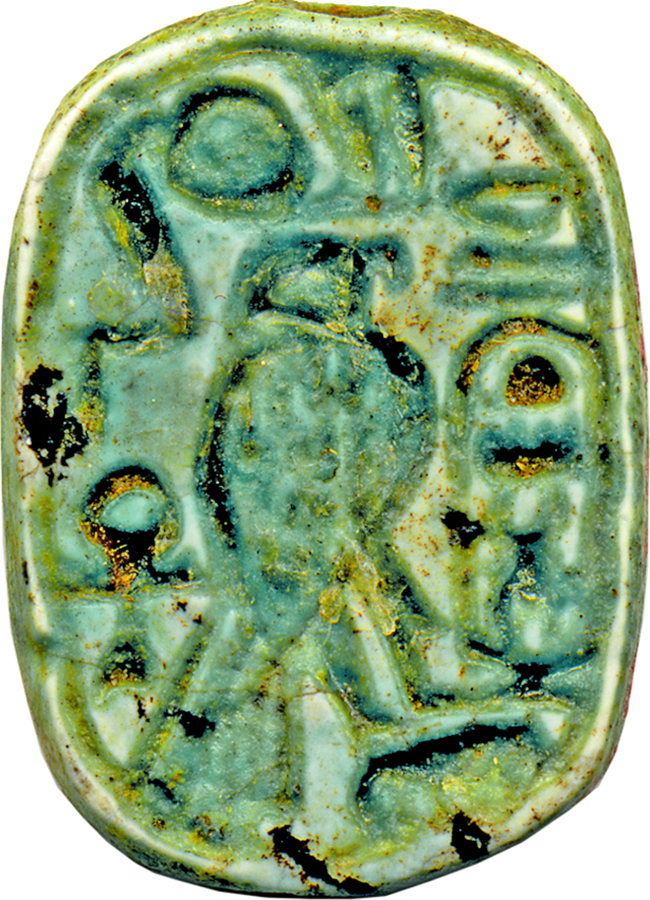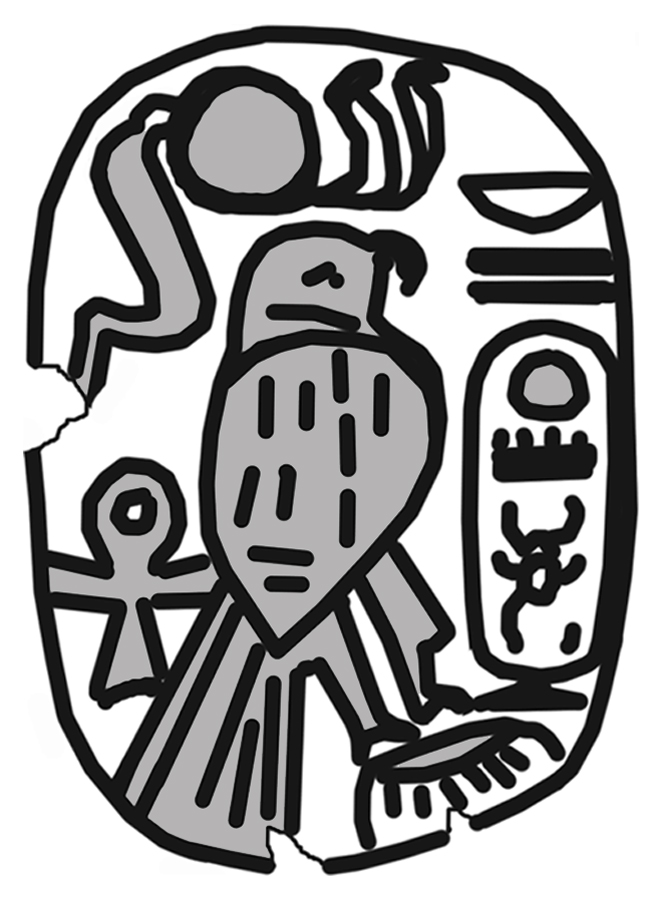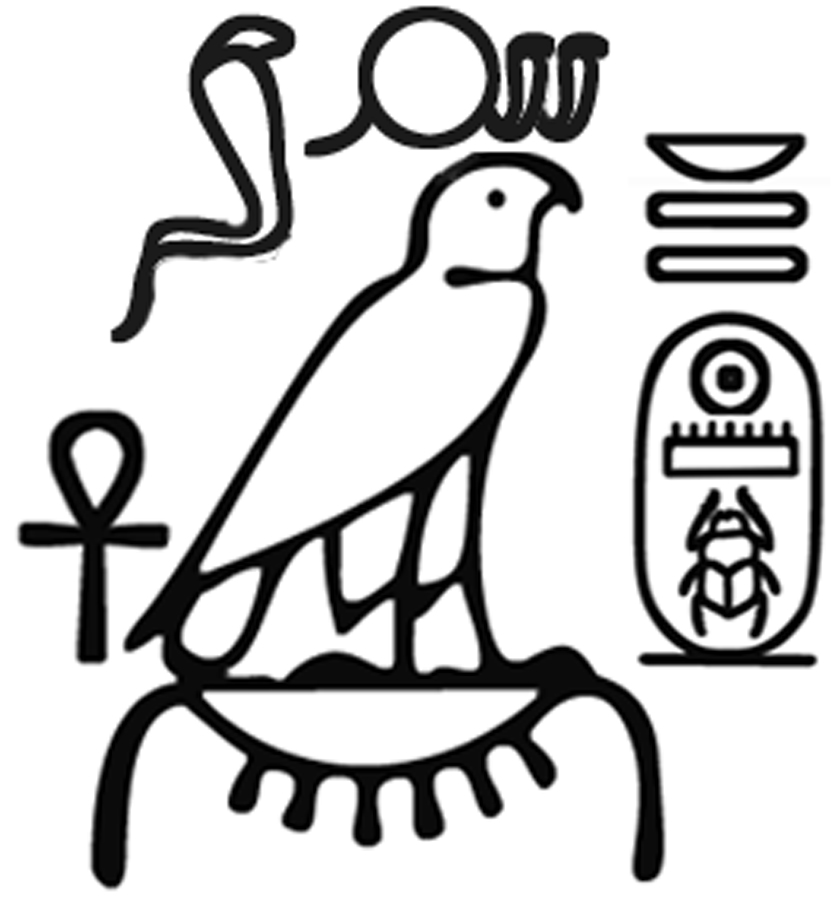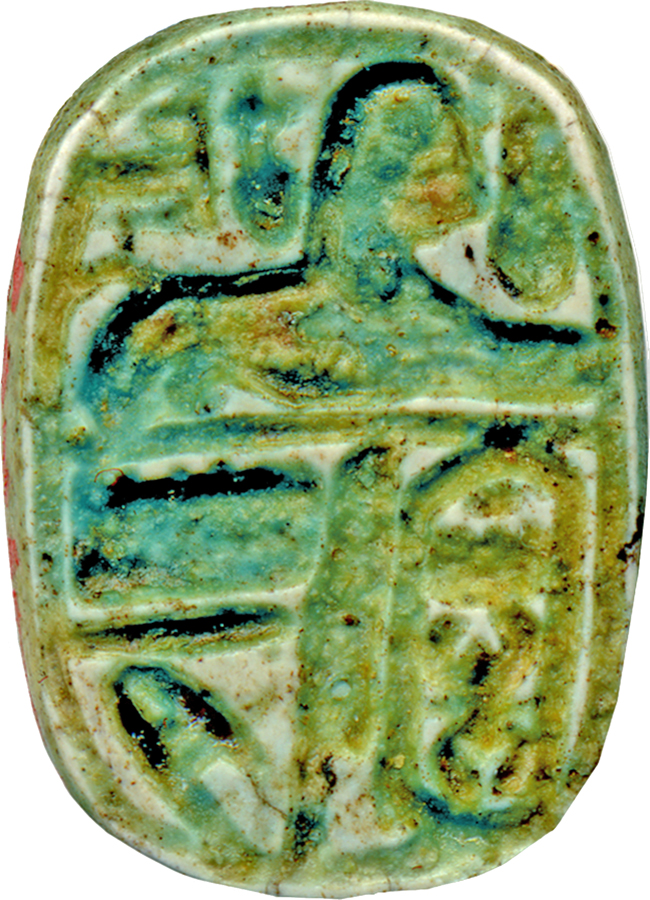Plaque with the Cartouche of Thutmosis lll (1479-1425 BCE)
(Ancient Egypt and Nubia )
This glazed plaque is inscribed on both sides with the throne name of Thutmosis III (1479-1425 BCE). The plaque is symmetrically formed, the sides smoothed, and the images on front and reverse executed in deeply sunk relief with thick incised lines. Some of the images and text signs are lopsided. The workmanship is slightly rough and the piece is not very carefully made.
This piece functioned as a individualized amulet, and was originally mounted or threaded. The amulet should secure the existence/presence, divinity, and royal authority for the king, as well as divine protection and the special support of Amun. It should provide a private owner with this king's patronage and protection.
Double sided decorated oval plaques are typical for the 18th Dynasty, especiallay the reign of Thutmosis III-Amenophis III (1388-1351/1350 BCE).
Inscription
Provenance
Provenance (from the French provenir, 'to come from/forth') is the chronology of the ownership, custody, or location of a historical object. Learn more about provenance at the Walters.
Henry Walters, Baltimore, [date and mode of acquisition unknown]; Sadie Jones (Mrs. Henry Walters), New York, 1931, by bequest; Joseph Brummer, Paris and New York, 1941, by purchase [Brummer inv. no. N5143a]; Walters Art Museum, 1942, by purchase.
Geographies
Egypt (Place of Origin)
Measurements
H: 3/16 x W: 1/2 x L: 11/16 in. (0.4 x 1.3 x 1.8 cm)
Credit Line
Museum purchase [formerly part of the Walters Collection], 1942
Location in Museum
Not on view
Accession Number
In libraries, galleries, museums, and archives, an accession number is a unique identifier assigned to each object in the collection.
In libraries, galleries, museums, and archives, an accession number is a unique identifier assigned to each object in the collection.
42.1263




















